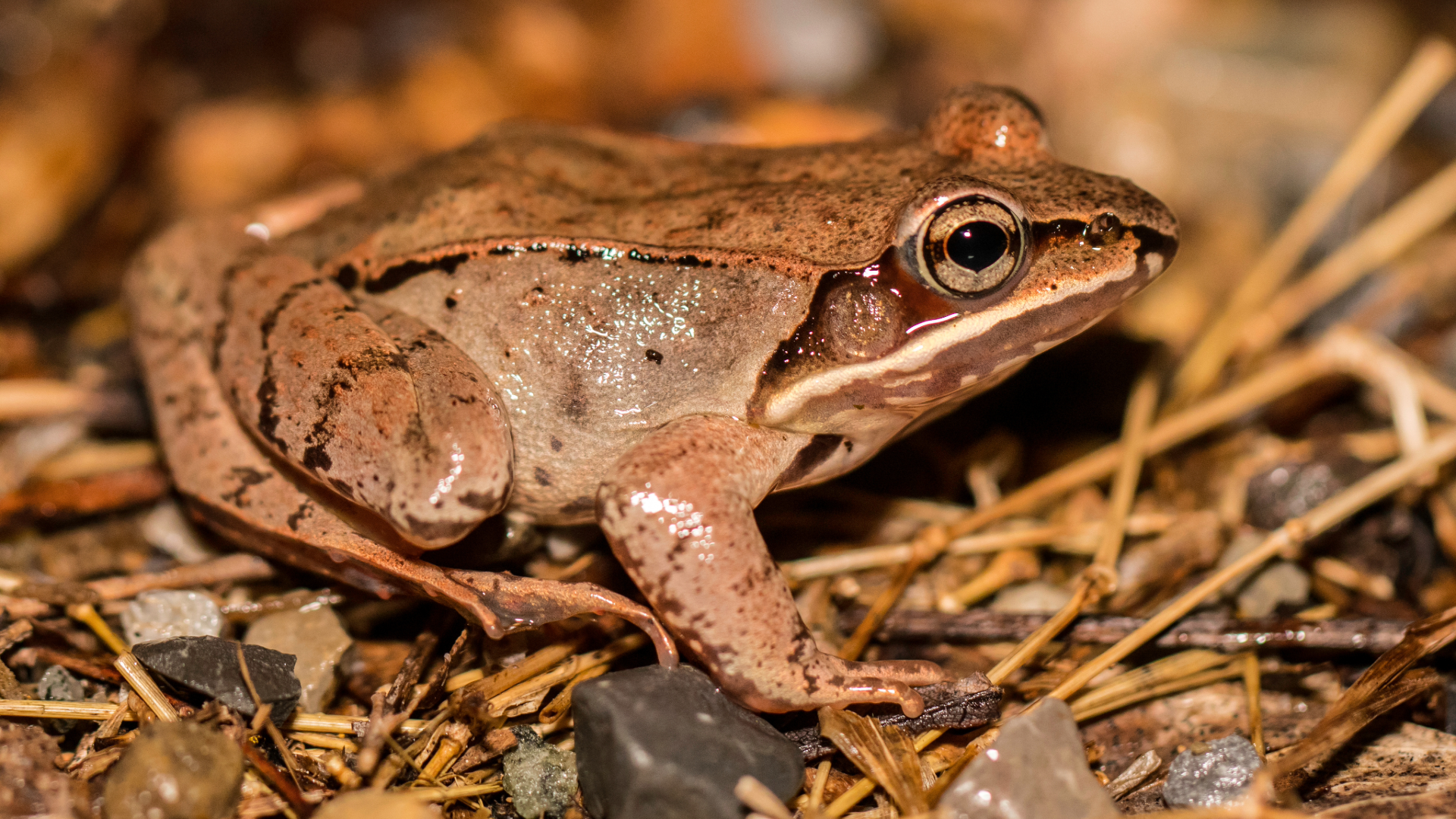Q: Is it true that some frogs can survive being frozen?
A: Yes! Most frogs hibernate at the bottom of ponds, lakes, and streams, where the temperature holds steady at about 39 degrees Fahrenheit throughout the winter—just warm enough for survival in a dormant state.
The wood frog takes a different approach, using a remarkable adaptation to stay alive. As winter approaches, they burrow under the leaves on the forest floor. If that sounds more inviting than the cold, watery depths, consider this: above ground, air temperatures consistently sit well below freezing.
That brings us to a fascinating survival adaptation: hidden beneath the leaves, the wood frog’s body freezes solid and enters a state of suspended animation for the duration of the winter. The heart stops beating and respiration ceases. If you happened upon a frozen wood frog walking through the forest in winter, you might assume it had died.
And yet, come spring, the frog begins to thaw from the inside out and life returns. The heart starts to beat again and slowly the rest of the body systems come back online. Once fully mobile, the frog enters breeding mode and hops away in search of a suitable pond.

A unique biological process allows the wood frog to freeze without damage to its body systems. As external temperatures start to dip below the freezing point, the frog’s liver produces significant amounts of glucose that flush through the bloodstream and permeate every cell. You can think of this glucose, a sugar compound, as the frog’s all-natural “anti-freeze.”
Scientists call this process cryoprotection, a concept worth breaking down. The formation of ice pulls water out of cells (think of freeze-dried food), and when living cells dry out they eventually die. Glucose helps retain water inside the cell wall, preventing cellular drying and damage even as ice begins to fill the frog’s abdominal cavity and surround its internal organs.
What about the lack of oxygen? Isn’t respiration of some form essential for life? Yes—but only if an organism is metabolically active (in other words, the body is using and processing oxygen). When the frog’s heartbeat stops it becomes metabolically inactive and no longer requires constant intake of oxygen.
The wood frog is one of the first northern frogs to breed each year. As spring rains begin and the snowpack melts away, wood frogs emerge from their frozen state and migrate to their breeding pools. The duck-like mating call of the male wood frog is a telltale sign of proximity to a breeding pool. Mating typically takes place over just a couple of days; meanwhile, other species of frogs are still fast asleep beneath the surface of surrounding lakes and ponds.
Wood frogs reach maturity in one to two years, and typically live about three years. The annual winter freeze, then, is a significant event in the frog’s life cycle.
Wood frogs are of special interest to medical researchers searching for solutions to everything from diabetes management to organ transplant. For us, the wood frog presents a fascinating example of the diversity and unique adaptations of aquatic organisms in the Lake Champlain Basin.
Sources: National Park Service, National Wildlife Federation, University of Alaska Fairbanks, Vermont Center for Ecostudies